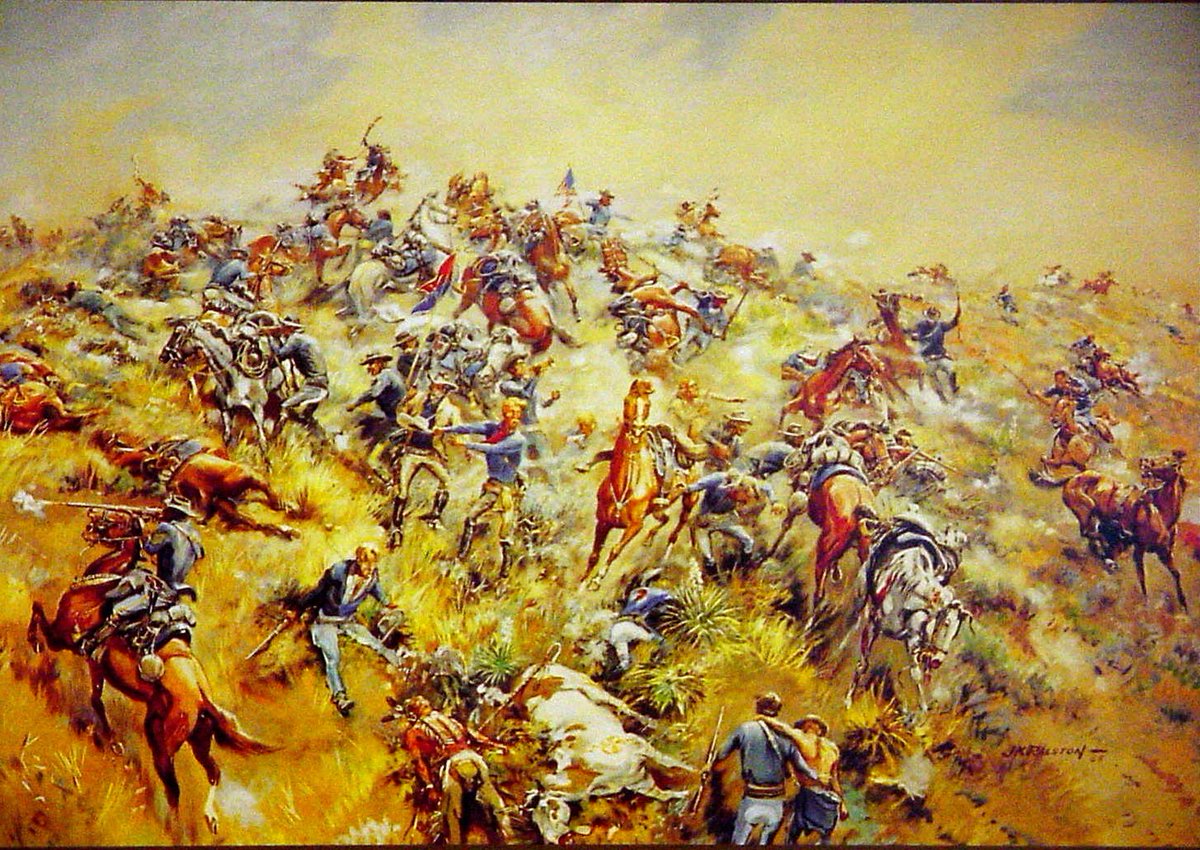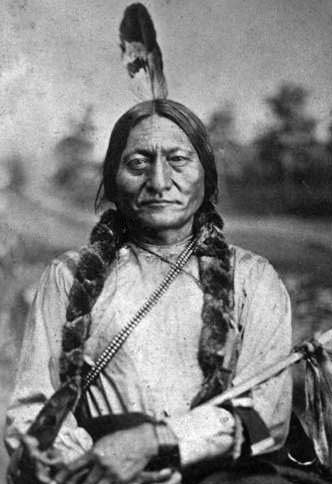
25-26 JUNE 1876 - BATTLE OF LITTLE BIGHORN - Indian Wars (Great Sioux War)
At sunrise on 25 June Lieutenant Colonel George A. Custer's Arikara and Crow scouts reported a large Indian village was in the Little Bighorn Valley.
At sunrise on 25 June Lieutenant Colonel George A. Custer's Arikara and Crow scouts reported a large Indian village was in the Little Bighorn Valley.

Custer divided the 7th Cavalry's 12 companies into three battalions. Custer ordered one three-company battalion, commanded by Major Marcus Reno, to cross the river and attack the village from the south.
#VictoryStartsHere #JoinUs #ServeWithUs @SecArmy @USArmy @TRADOC
#VictoryStartsHere #JoinUs #ServeWithUs @SecArmy @USArmy @TRADOC

Another BN of three companies, under Captain Frederick Benteen, marched southwest to engage any hostile Indians it encountered. Custer retained five companies under his direct command. The last company provided escort for pack mules of the baggage and ammunition train. 

Reno's battalion initially surprised the Lakota (Sioux) and Cheyenne warriors in the village, but the defenders met and repulsed the assault, and forced the troopers to retreat to the bluffs east of the river. Reno's men took a defensive position and fended off repeated attacks. 

Finding no evidence of hostile Indians to the south, Benteen's men returned to the main force when they saw Custer's beleaguered force was too hotly engaged to reach. They and McDougall's command joined Reno's troopers on the bluffs, surrounded for the rest of the day and night. 

Custer's five companies had meanwhile advanced to the high ground near a wide gully that led down to the river ford and the village on the far bank. Most of the Indian warriors turned their attention against that battalion.
#Armyhistory #USArmy #IndianWars #TRADOC
#Armyhistory #USArmy #IndianWars #TRADOC
Outnumbered and under the warriors' superior firepower, Custer's troopers put up a stiff resistance - making their "last stand" - but were doomed. When the warriors rushed their final skirmish line, the remnants of the five companies were overwhelmed and killed to the last man. 

• • •
Missing some Tweet in this thread? You can try to
force a refresh
















